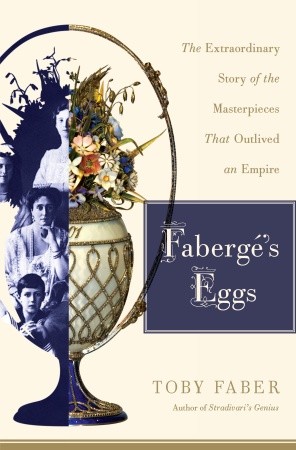
Fabergé's Eggs
The Extraordinary Story of the Masterpieces That Outlived an Empire
کتاب های مرتبط
- اطلاعات
- نقد و بررسی
- دیدگاه کاربران
نقد و بررسی

August 4, 2008
In 1885 Czar Alexander III presented his wife, Marie, with a spectacularly crafted Easter egg. Over the next three decades, its creator, Carl Fabergé, made 49 more such eggs filled with jeweled surprises and exquisitely detailed paintings for the czar's family. Faber (Stradivari's Genius
), former managing director of his family's firm, Faber & Faber, describes the eggs in loving, mouthwatering detail, bolstering his claim that the French-born jeweler led the Russian aristocracy to appreciate fine jewelry design over sheer gem size. Fabergé's influence also spread westward. In England, Marie's sister, Queen Alexandra, also developed a passion for Fabergé. Many of the eggs wound up in the United States after the canny businessman Armand Hammer made a deal with the Soviets to buy nearly one-third of them. Eventual owners included Egypt's King Farouk and cereal heiress Marjorie Meriweather Post. Faber frustratingly devotes far more ink to Romanov history and the precious eggs' twisted paths after leaving Russia than he does to the man who designed them. But the details he does provide—such as Hammer's unscrupulous dealings—make for a tantalizing read. 16 pages of color photos.

September 15, 2008
Faber moves beyond mere description and illustration as he traces the fascinating history and sociology of these turn-of-the-century status symbols. Set against the sumptuous backdrop of Romanov Russia, the story of the creation of the original 50 imperial Faberg' eggs parallels the story of a nation in flux and an imperial family teeteringalmost unwittinglyon the verge of extinction. As revolutionary fervor swept across Russia and the Romanov dynasty crashed and burned, these opulent, intricately designed eggs quickly became emblematic of a bygone era. To raise money, the Russian government began selling the gem-encrusted eggs in the mid-1920s, and they eventually became an international sensation. Art, history, business, and culture combine to play significant roles in the odyssey of the coveted Faberg' eggs from the latenineteenth century to the early twenty-first century.(Reprinted with permission of Booklist, copyright 2008, American Library Association.)

























دیدگاه کاربران